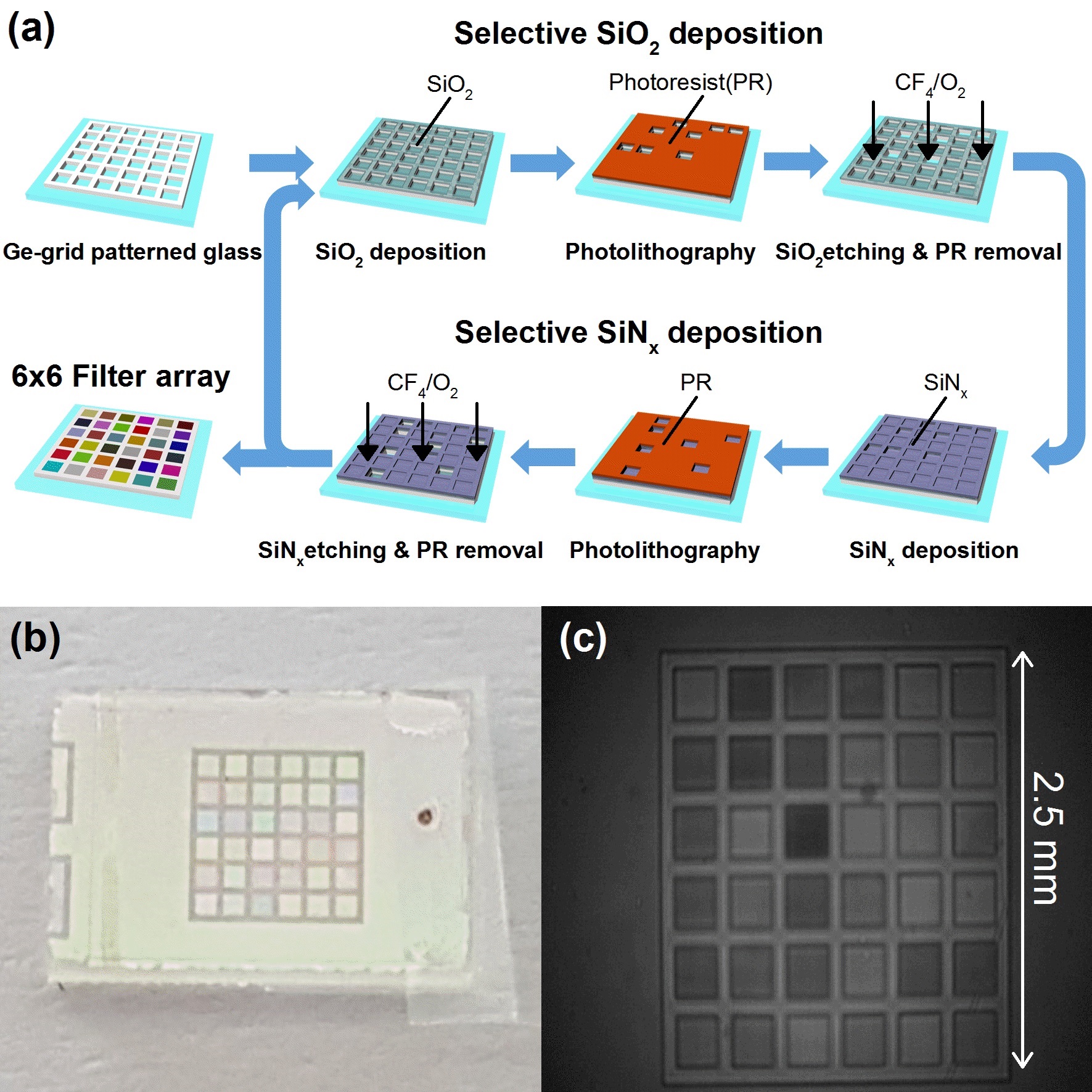2018.12.08
GIST (President Seung Hyeon Moon) Professor Heung-No Lee's research team has succeeded in developing a two-dimensional optical filter arrangement-based small-sized spectroscope using digital signal processing technology.
The spectroscope is a device that can measure the intensity of light according to wavelength and is used in various research and industrial fields such as optics, environmental engineering, biotechnology, and food industry. Particularly, the small-sized spectroscope is advantageous in that it can measure the characteristics of an object in various environments unlike a conventional spectroscope used only in a specific environment.
However, there is a problem that the small-sized spectroscope can not provide high resolution due to the physical limitations such as the number of optical elements (optical filters) that can be integrated in the spectroscope and the inter-optical element interference phenomenon.
The research team designed and manufactured a small spectrometer that can fit in a hand which can measure the intensity of light in a wide wavelength band from visible light, ultraviolet, and near infrared using a small number of optical filters by using a digital signal processing technique with an optical filter arrangement.
Unlike conventional optical filters that only detects light of a specific wavelength band, one optical filter is designed and manufactured to detect light of a plurality of wavelength bands. 36 filters were arranged in a two-dimensional array, and the array was mounted on a CMOS sensor to measure the intensity of light in the 500-1000 nm wavelength band.
The intensity of light measured through the CMOS sensor has a variety of information in the range of visible light and ultraviolet wavelength, but there is a problem in that information is mixed with the characteristics of the filter for detecting light of various wavelength bands.
The team solved this problem using digital signal processing technology. The intensity of the light of a specific wavelength band can be recovered by using the intensity of the measured light and the transmission characteristics of the optical filters.
The small spectroscope designed and fabricated through simulation and optical experiments showed stable operation in various light sources such as monochromatic light, LED light source, and halogen source.
Professor Heung-No Lee said. "The study showed that small, randomfilter-based spectroscopy-based spectroscopy could actually be implemented, and it greatly exceeded the performance of expensive spectroscopy by using mathematical signal processing techniques. A small spectroscope that can fit in the palm of your hand would allow the general public to use the spectroscope in real life, such as checking blood sugar levels."
This research, led by Professor Heung-No Lee (correspondent author) and Cheolsun Kim (first author), was supported by the National Research Foundation of Korea and was published online on November 24, 2018, in Optics and Lasers in Engineering, an international scientific journal published by Elsevier.













